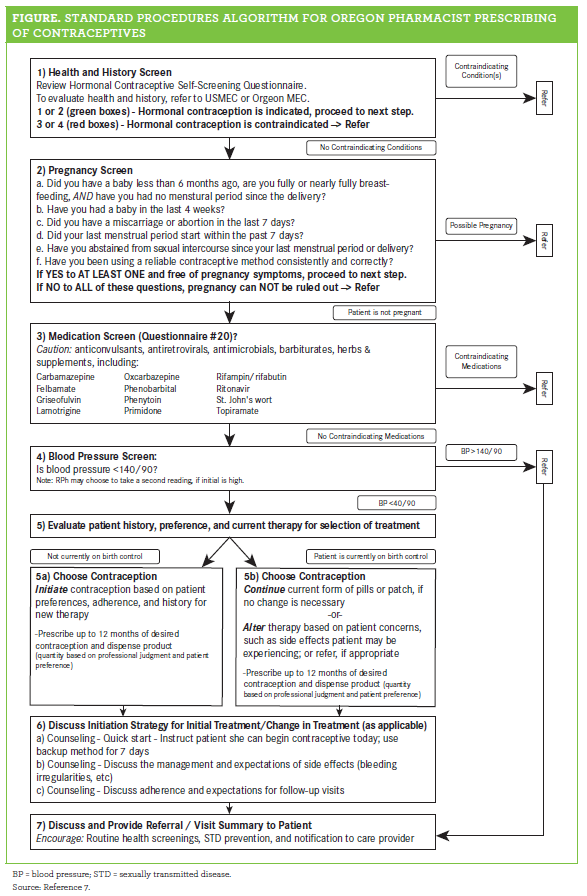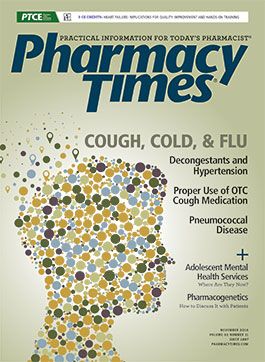Publication
Article
Pharmacy Times
Pharmacists Prescribing Birth Control: Improving Access and Advancing the Profession
Ease of access to birth control has always been an issue for women everywhere.
Ease of access to birth control has always been an issue for women everywhere. Although men are able to purchase condoms over the counter, women are required to make annual appointments with physicians in order to receive a prescription for contraceptives. This can present significant barriers to receiving appropriate therapy, whether related to the cost of an appointment or the need to take time from work to accommodate a physician’s schedule. These and other barriers may force many women to forego contraceptive therapy altogether, likely contributing to nearly 50% of pregnancies being unintended in the United States each year.1
Several states, including Oregon, California, Washington, and, most recently, New Jersey, have begun to address these issues by enlisting the services and expertise of pharmacists.2 These states have enacted legislation that allows pharmacists to prescribe and dispense self-administered hormonal birth control, including oral tablets and transdermal patches, without a physician’s prescription. Pharmacists who wish to participate in these practices must first complete the necessary training seminars mandated by their state. Although the laws vary slightly in regard to required patient age or products authorized to prescribe, it is generally universal that pharmacists must obtain a patient’s relevant medical history, pregnancy status, and medication history, as well as perform blood pressure screening, before authorizing a prescription. This is achieved with a 1-page self-screening questionnaire, similar to those used for immunizations.3
Based on the results of these screenings, pharmacists can use a standard procedures algorithm (Figure) to evaluate the patient and make prescribing decisions.4 If, for some reason, the pharmacist declines to prescribe a contraceptive (eg, blood pressure exceeds 140/90 mm Hg), the patient may be referred to a physician for further evaluation. If a prescription is indicated and a product dispensed, the pharmacist must provide a summary form of the encounter, detailing which medication was selected and inquiring if the patient has any questions, allowing further counseling if necessary.3

THE DISADVANTAGES
The response to the enactment of pharmacist prescribing laws has been dichotomous. Some physicians express concern that, without requiring women to have an annual checkup to obtain birth control, many will skip necessary testing. However, for women aged 21 to 65 years, a Pap test is recommended only once every 3 years or every 5 years, if co-tested for human papillomavirus at the same visit. Accordingly, pharmacists cannot write a prescription for a woman who is unable to provide evidence that she has visited a women’s health provider within 3 years of the pharmacist’s initial prescription for a contraceptive.3 While removing an unnecessary barrier to annual prescriptions, this caveat ensures that women will still receive the recommended screenings.
Pharmacists also express apprehension regarding the ability of community pharmacists to add contraceptive prescribing to their already long list of duties in a fast-paced work environment. Additionally, in states where pharmacists have not been granted provider status, there is concern that pharmacists will not be sufficiently reimbursed for their time and effort in evaluating and counseling patients. California law allows up to a $10 fee per prescription, but it is hoped that in the future, pharmacists will be able to bill insurance for services provided, just as a physician would.2
THE ADVANTAGES
On the other hand, the potential benefits of pharmacists prescribing contraceptives are numerous. The pharmacist is the most accessible health care provider, offering convenient locations and extended hours of operation that physicians typically lack. Patients who cannot take the time for an appointment to obtain contraceptive therapy can visit a local pharmacy and receive a prescription. Further, it is estimated that within the next 10 years, there will be a 27% shortage of primary care providers in the United States; however, the number of available pharmacists continues to increase.5 The expansion of pharmacists’ prescribing authority could decrease the burden shouldered by physicians largely due to the increase of newly insured patients under the Affordable Care Act.6
Finally, it has been consistently proved that pharmacist involvement in patient care improves outcomes, increases adherence, and decreases costs. A recent study in Washington state surveyed 214 women evaluated by 26 community pharmacists for use of hormonal contraceptives. Of the women who responded, 70% reported continual use of their prescribed contraceptive after 12 months and nearly every respondent “expressed willingness to continue to see pharmacist prescribers” for this and other services. These results demonstrate that pharmacists are capable of screening patients and selecting appropriate contraceptive products, and are accepted by patients as primary care providers.5
END NOTE
Pharmacists have long been an underutilized resource in our health care system. With increased prescribing authority, they may be able to provide much-needed care to individuals otherwise unable to access it, improve patient adherence and related outcomes, and offer some relief to overwhelmed physicians. The prescribing of contraceptives is just the beginning of this movement and could be followed closely by the prescribing and monitoring of medications for chronic conditions such as diabetes or hypertension. It is up to pharmacists to embrace this responsibility in the interest of their patients and their profession.
Erin N. Deja, a native of Union, Kentucky, is a third-year PharmD student at the University of Kentucky College of Pharmacy. Joseph L. Fink III, BSPharm, JD, is professor of pharmacy law and policy and the Kentucky Pharmacists Association Professor of Leadership at the University of Kentucky College of Pharmacy, Lexington.
References
- CDC. Unintended pregnancy prevention. CDC website. cdc.gov/reproductivehealth/unintendedpregnancy. Accessed September 26, 2016.
- Livio SK. Lawmakers vote to let NJ pharmacists prescribe birth control. NJ.com website. nj.com/politics/index.ssf/2016/05/lawmakers_agree_pharmacists_should_be_allow_to_pre.html. Published May 2, 2016. Accessed September 26, 2016.
- Vivian JC. Pharmacists prescribing birth control. US Pharmacist website. uspharmacist.com/article/pharmacists-prescribing-birth-control. Published February 17, 2016. Accessed September 26, 2016.
- Oregon state. Standard procedures algorithm for Oregon RPh prescribing of contraceptives. Oregon Administrative Rules website. oregon.gov/pharmacy/Imports/ContraceptivePrescribing/ORStandardProceduresAlgorithmForRPHPrescribingOfHormonalContraceptives11_2015.pdf. Accessed September 26, 2016.
- Fundin J, Dragic LL, Raouf M. Should pharmacists prescribe birth control? Drug Topics. drugtopics.modernmedicine.com/drug-topics/news/should-pharmacists-prescribe-birth-control?page=0,3. Published January 27, 2016. Accessed September 26, 2016.
- Feder Ostrov B. California, Oregon to allow hormonal contraceptives without a doctor's prescription. Kaiser Health News website. khn.org/news/california-oregon-to-allow-hormonal-contraceptives-without-a-doctors-prescription. July 15, 2015. Accessed September 26, 2016.







